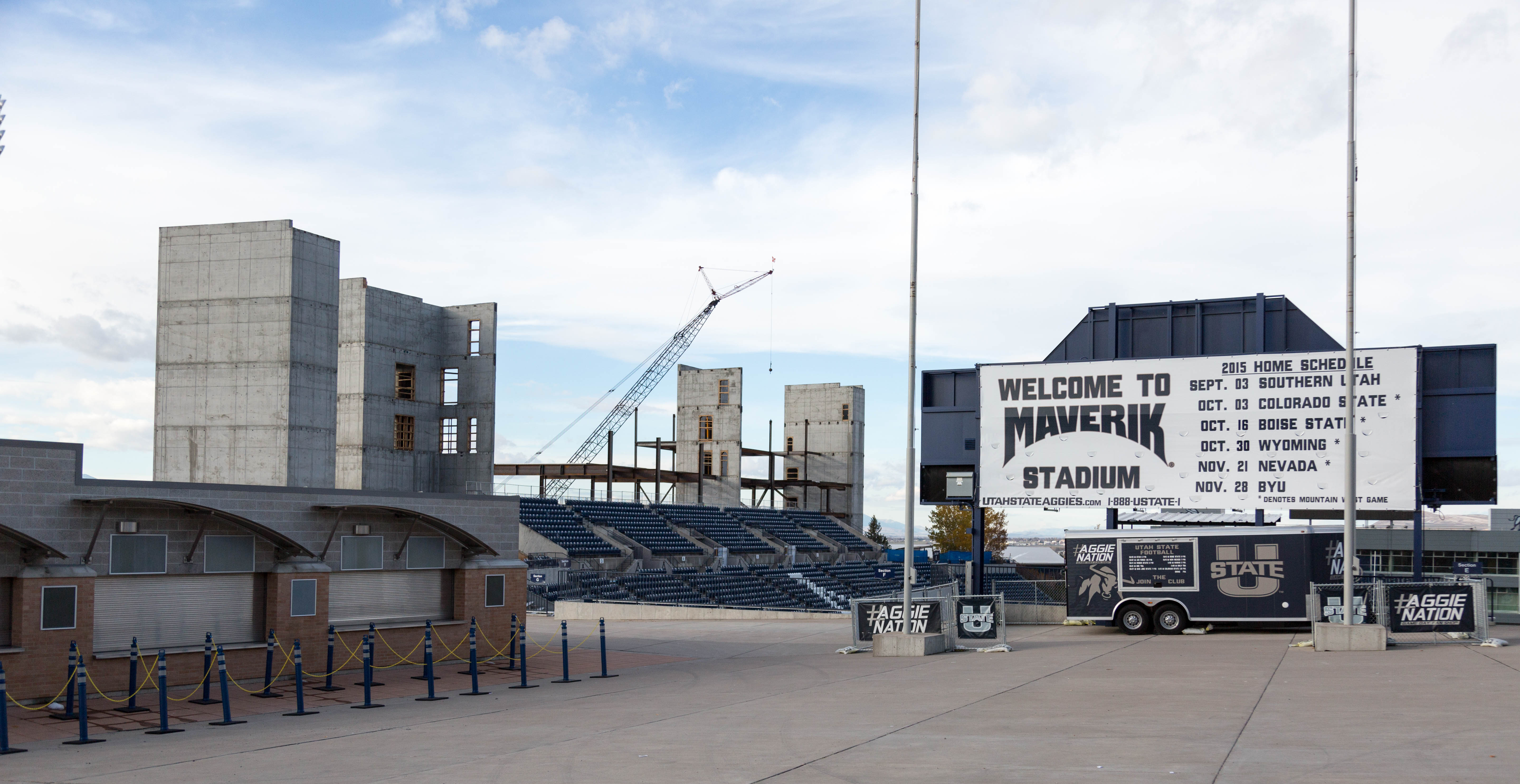Apartment construction in Logan sparks questions
With all the construction going on in Logan at the moment, particularly on apartment buildings, one may begin to wonder: why is all of this happening now?
Rumors have surfaced that Logan is expecting a large population boom and the city wants to kick all the students out of houses and get them into apartments instead.
The truth is a little different.
“Logan actually is projecting less growth than the surrounding communities,” said Mark Nelson, the public works director for Logan. “We’re projecting to grow at about 1.5 percent per year.”
Nelson said the other communities surrounding Logan are expected to grow, and will continue to, but Logan will not.
“We will not see the growth that you’ll see in the outlying communities,” Nelson said.
Bill Young, the assistant public works director, said the growth in communities like Smithfield and Wellsville is residential growth. Within Logan, some growth is expected over the next few years, but that growth is all commercial — meaning it doesn’t factor into population growth.
Russ Holley, the senior planner for Logan, said the 1 to 1.5 percent growth rate, though true, can be a little deceiving.
“It’s exponential growth,” Holley said. “Our growth rate has been consistent, but as the population grows the rate increases. So how that 1 to 2 percent equates is we double about every 30 years. Right now, we’re at 50,000 people, so by 2045 we should be at a 100,000 people.”
Holley said most of that growth comes from within the community.
“Seventy percent of that is our kids, it’s nonmigrant,” Holley said. “And 30 percent is migrant, or folks moving in from other areas.”
Holley said the student population is considered migrant.
John Mortensen, the vice president for Student Services on campus, said there was a large spike in student population on USU’s Logan campus this fall, but it has nothing to do with a population boom.
“We did have an increase in enrollment this fall,” Mortensen said. “Part of that was due to the tail end of the missionary age change that occurred a couple of years ago and part of it was due to increased recruiting efforts.”
Mortensen said the increase was record-setting.
“On Logan campus this fall, we were up 1,123 students over last year,” Mortensen said.
He said though enrollment always has changes from fall to spring and the effects of the spike will still be seen.
Steve Jenson, the executive director for housing and residence life at Utah State, said some changes are going to made to housing plans on campus to accommodate some modest growth in student population, but nothing too radical.
“I don’t think there will be any huge growth spurts on this campus,” Jenson said. “This semester we started to see more of the full effect of the LDS mission change, but I think from this point forward it will probably be pretty steady.”
Jenson said he thinks many investors are building student housing units due to a better building environment at the moment.
“I think some of it is that interest rates are pretty low right now,” Jenson said. “There are a lot of developers all over the nation that are out trying to build housing, particularly on college campuses.”
Jenson said the changes to on-campus housing will be replacement projects for Mountain View Tower and Valley View Tower.
“In 2017 we’ll be opening a new facility that will be replacing Valley View Towers,” Jenson said. “The plan right now is take Valley View down during the summer of 2017 and the new housing will come online fall of 2017.”
Though the buildings will be replaced, Jenson said the increase will be modest — 362 to 378 new beds in Valley View.
Holley said the new housing units being built are not part of a city plan to remove students from houses, but they are simply new product options.
— mikeburnham3@gmail.com
@mikeburnham31

